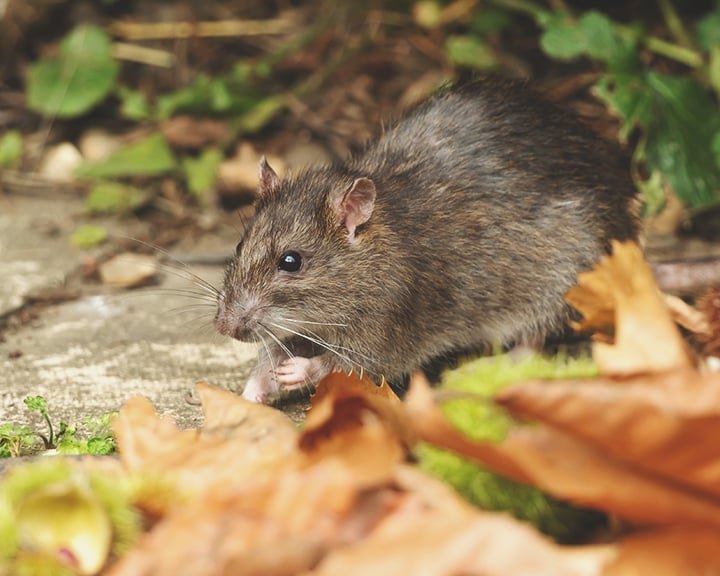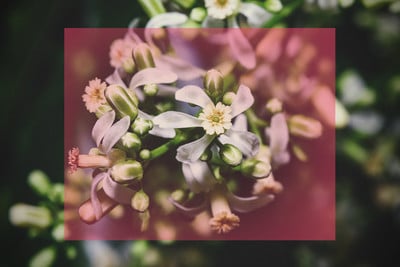.

How to Protect Weed Plants From Mice and Rats
Do mice eat weed? What about rats? That brownie might have been strong, but this is a serious question! Rodents are a threat to cannabis plants in certain areas. Not only do they eat seedlings, but they can chew stems to shreds. Learn how to fend them off.
You’re ready to take on waves of aphids and hoards of leaf miners. But don’t forget about mice and rats; most growers remain sceptical of this threat until it’s too late! These rodents can make a quick meal of vulnerable seedlings and love to grind down their teeth on woody stems. Learn how to treat an infestation, and how to prevent one from occurring in the first place.
Contents:
- Understanding the threat of rodents when growing cannabis
- Risks of rats and mice to weed plants
- How to deal with rats and mice damaging cannabis plants
- How to prevent rats and mice from damaging cannabis plants
- Keep your cannabis grow safe from rodents and hungry animals
- How to deter large insects
- Shield your weed from small insects
- Keep your crop safe from hungry animals
Understanding the Threat of Rodents When Growing Cannabis
Cannabis growers have to contend with a host of different pests and diseases during the growing cycle. Most cultivators are wary of aphids, spider mites, and fungus gnats, and do everything they can to prevent these threats. However, most don’t consider the possibility of rogue rodents when preparing a growing area.
Although they aren’t the most common pests, rats and mice can inflict serious damage in the grow room or garden; they happily devour the leaves of seedlings and gnaw straight through tough stems. To make sure they don’t sabotage your growing efforts, you need to learn how to keep rodents away from weed plants.
Rats


Rats have a bad rap. They’re viewed as dirty creatures that carry diseases. While these statements aren’t false, they became this way after humans built densely populated cities and made a mess of handling their waste. In nature, rats play an important ecological role and contribute to the health of grasslands and forests. However, any sympathy for these creatures quickly goes out of the window when they start tearing through cannabis plants.
Rats are opportunistic feeders, and they’ll quickly tuck into any root vegetables, squashes, and cannabis plants growing in your garden. They’re known to consume seedlings and gnaw on thick stems to grind down their ever-growing incisors.
The average rat weighs around 200g and consumes roughly 3g of food each day. Black rats have a habit of making their nests high off the ground, whereas their brown counterparts like to keep their feet on firm ground. Considering that female rats produce 5–10 pups per litter, and give birth to 3–6 litters per year, they can quickly become a major problem.
Mice


Despite their similarities as rodents, rats and mice are entirely different creatures. Mice have proportionally longer tails, smaller and more slender bodies, with an average weight of 30g, and make their nests in burrows. Although smaller than rats, mice are far more prolific. They can give birth to up to 16 pups at once, and are capable of producing 8 litters in one year. Just like rats, mice are unlikely to turn down fresh seedling leaves or the opportunity to sink their front teeth into cannabis stems.
Risks of Rats and Mice to Weed Plants
The potential damage inflicted by mice and rats varies in severity from minor wounds to complete destruction. This largely depends on the size of your rodent problem and the age of your plant during the assault. Seedlings generally stand no chance in the face of mice and rats, and thus require much more protection. Larger plants are more likely to survive, though significant gnawing damage to the base of stems can inhibit water and nutrient transport and leave plants susceptible to strong gusts.
Signs of Rats and Mice Damaging Cannabis Plants
There are several telltale signs that rats and mice are occupying your garden and damaging—or at least considering damaging—your cannabis plants. These include:
- Gnawed stems
- Chewed buds
- Mouse and rat droppings near plants
- Mouse burrows in your soil/lawn
How to Deal With Rats and Mice Damaging Cannabis Plants
If you notice any of the signs above, you missed your chance to prevent an infestation (more on that below). Now, you need to take action before your resident rodents inflict any more damage. Check out the tips below to deal with your long-tailed problem.
🐱 Unleash Your Feline
If you learnt anything from Tom and Jerry, it’s that mice and cats don’t exactly get along. Cats use their extraordinary senses and reflexes to stalk, run, and pounce on mice and rats. Unless you don’t mind cleaning up, it’s best to reserve this strategy for outside infestations.
📦 Humane Traps
Humane rat and mouse traps don’t kill rodents. Instead, they lure them into a cage or container and lock them inside. While easier on the conscience, this option leaves you with the problem of a live rodent. You’ll need to move it far away from your premises to prevent it from coming back for more.
⚡ Deadly Traps
There are a variety of deadly rodent traps available if you find your problem quickly spiralling out of control. These range from spring-action metal bars to electronic traps that are quick and clean.
🧪 Rat Poison
Rodenticide products use chemicals to dispatch mice and rats, including bromethalin, cholecalciferol, zinc phosphide, and strychnine. Although effective, rodenticides are extremely brutal. They cause internal bleeding in rats and mice, and it can take them up to 10 days to die following consumption. You also need to consider where you place these poisons, as they are highly dangerous to pets, children, and adults.

How to Prevent Rats and Mice From Damaging Cannabis Plants
Prevention works better than a cure—always. Employ the strategies below to prevent infestations from occurring in the first place and avoid the hassle and guilt of having to kill mice and rats.
1. Compost Properly
If you notice mice and rats in your garden, you might have a composting problem. To avoid making your compost bin a safe haven for rodents, you need to restrict certain materials. These creatures are drawn to grains, bread, meat, fish, eggs, and dairy. Limit your composting materials to vegetable scraps and garden waste.
2. Remove Bird Feeders
Hanging a bird feeder up in your garden seems like a great idea at first. Watching birds congregate provides quite a meditative experience. These winged friends also help to take down certain pests. However, you can’t expect mice and rats to respectfully pass on the chance of extra calories. To prevent rodents from harming your weed plants, remove any bird feeders from your growing area.
3. Remove Water Sources
Much like us, rats and mice are made up primarily of water. Whereas mice can survive off of 3ml of water per day, rats need up to 60ml. To minimise the chances of an infestation, you should remove bird baths and any empty containers that are slowly collecting rainwater.
4. Keep Things Tidy
You’ll rarely see a mouse or rat out in the open. To avoid cats, birds of prey, and other predators, they prefer to travel in covered areas. Therefore, you may inadvertently provide safe passage to rodents by leaving things lying around your garden. Tipped-over plant pots, spare guttering, large tools, piping, and brick piles are all welcoming sights to these furry foes. Maintain a clean garden to keep your weed plants safe.
Keep Your Cannabis Grow Safe From Rodents and Hungry Animals
Rodents aren’t the only critters that will take a chunk out of your cannabis plants. Deer, rabbits, and even pets can do serious damage if given the chance. It goes without saying that physical barriers, such as fencing and netting, are required to protect weed plants from larger mammals. However, the guidance above also applies to smaller creatures, including rabbits and squirrels. With this newfound knowledge, you should cruise through the next growing season with minimal interference from hungry beasts!




























































